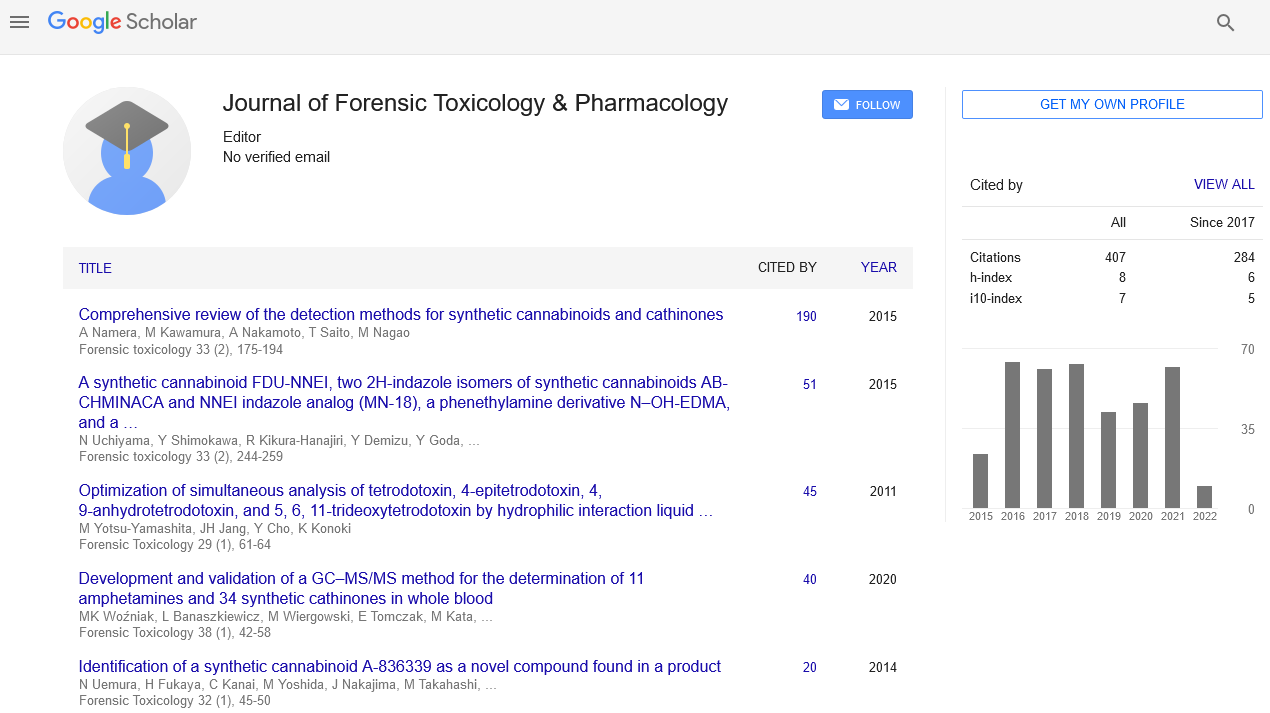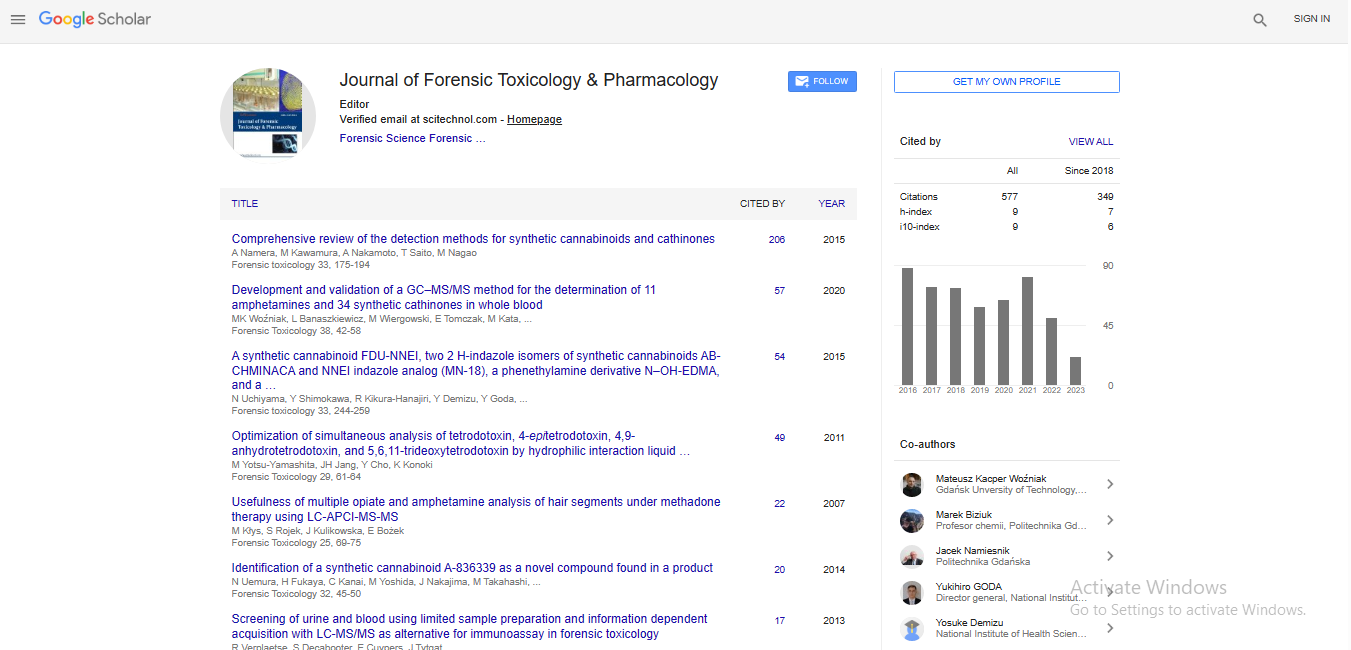Opinion Article, J Forensic Toxicol Pharmacol Vol: 13 Issue: 3
Green Toxicology: Assessing Environmentally Friendly Drug Metabolism and its Role in Reducing Ecotoxicity
Emiliano Rodriguez*
1Department of Toxicology and Environmental Health, National Autonomous University of México, Mexico City, Mexico
*Corresponding Author: Emiliano Rodriguez,
Department of Toxicology and
Environmental Health, National Autonomous University of México, Mexico City,
Mexico
E-mail: rodriguezemiliano@gmail.com
Received date: 26 August, 2024, Manuscript No. JFTP-24-151888;
Editor assigned date: 28 August, 2024, PreQC No. JFTP-24-151888 (PQ);
Reviewed date: 11 September, 2024, QC No JFTP-24-151888
Revised date: 18 September, 2024, Manuscript No. JFTP-24-151888 (R);
Published date: 25 September, 2024, DOI: 10.4172/JFTP.1000199
Citation: Rodriguez E (2024) Green Toxicology: Assessing Environmentally Friendly Drug Metabolism and its Role in Reducing Ecotoxicity. J Forensic Toxicol Pharmacol 13:3.
Description
Green toxicology is a developing field focused on creating and testing drugs that are not only safe for humans but also gentle on the environment. Traditionally, pharmaceutical safety studies centered on human health and therapeutic efficacy, but today’s research expands to encompass the environmental consequences of drug metabolism. This shift acknowledges that pharmaceuticals, when excreted and released into waterways or soils, can accumulate in ecosystems, sometimes affecting plants, animals and even groundwater. Green toxicology thus plays an essential role in rethinking how drugs interact with both humans and the environment.
Pharmaceuticals enter the environment in many ways. After human or veterinary use, drugs can pass unchanged or in their metabolized forms into wastewater, which treatment plants may not fully filter out. These compounds can persist and accumulate, impacting ecosystems. In aquatic settings, for example, certain drugs affect the reproductive systems of fish or alter plant growth. Over time, the cumulative effect of such exposures raises concerns about biodiversity, ecosystem function and even human exposure via contaminated water.
Green toxicology aims to reduce these risks by developing pharmaceuticals that degrade more easily after use, losing their bioactivity once excreted. Achieving this goal requires a combination of innovative drug design, new testing methodologies and regulatory incentives that encourage environmentally responsible drug development.
One of the first steps in green toxicology is to understand how drugs metabolize in the body and in the environment. This process is complex, with metabolism influenced by the chemical properties of the drug itself and the biological characteristics of the organism. By studying these interactions, researchers can identify factors that may allow certain drugs to break down into harmless components after use. Such knowledge guides the design of molecules that retain therapeutic effectiveness while being less persistent in nature.
Another core area of green toxicology is the development of predictive testing models. Traditional toxicology tests focus on acute toxicity in specific organisms, but green toxicology requires long-term environmental assessment. Researchers often use computational models and laboratory simulations to predict a drug’s environmental impact before its release. These tools can estimate a drug’s persistence and likelihood of bioaccumulation and assess whether it may disrupt natural biological processes. Advances in ecotoxicity screening make it possible to test new compounds quickly while minimizing animal testing.
The role of policy and industry incentives is also critical in green toxicology. Regulatory bodies have begun encouraging pharmaceutical companies to include environmental risk assessments in their drug development processes. Incentives can take various forms, from tax breaks for environmentally friendly drug design to streamlined approval processes for drugs with minimal ecological impact. Such measures aim to make green toxicology an integral part of drug research and development rather than an optional consideration.
For consumers, understanding green toxicology can influence how medications are disposed of. Many people are unaware that unused or expired drugs should not be thrown in the trash or flushed down the toilet, as this can contribute to environmental contamination. Instead, pharmaceutical take-back programs and designated drop-off points allow for safe disposal, reducing the likelihood of drugs entering the water supply. Ultimately, green toxicology represents a shift toward a more complete approach in pharmacology. As the field grows, it may encourage pharmaceutical innovation that respects both human health and ecological well-being.
 Spanish
Spanish  Chinese
Chinese  Russian
Russian  German
German  French
French  Japanese
Japanese  Portuguese
Portuguese  Hindi
Hindi 
